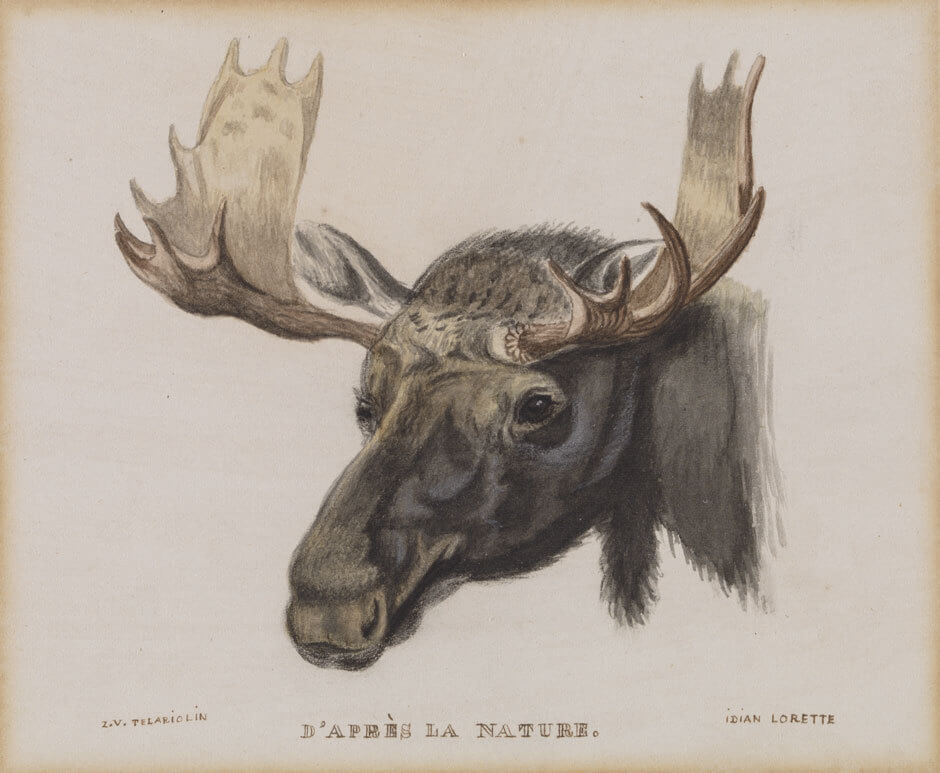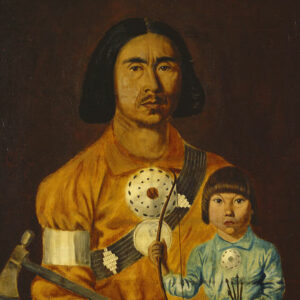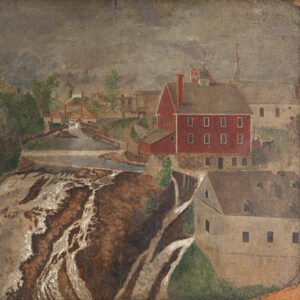Head of a Moose, from Nature c. 1855

Zacharie Vincent, Head of a Moose, from Nature, c. 1855
Watercolour and graphite on paper mounted on cardboard, 16 x 18.1 cm
Musée national des beaux-arts du Québec
In Head of a Moose Vincent demonstrates his close observation of nature and his skill in conveying a powerful sense of the animal. The modelling of the moose’s head and the detail with which the antlers are rendered reflect Vincent’s development as an artist.
Head of a Moose can also be understood as an expression of the animist, totemic principles that are of great importance in Native cultures. According to this worldview every human being is symbolically linked to and identified with the totemic animal associated with his clan.
This work evokes the creation myth of the chiefs, which tells the story of the twins Tsestah (Made of Fire) and Tawiskaron (Made of Flint). Tsestah was the first to take up the task of creation, and to protect humanity from hunger, labour, and pain he made the plains, the forests, the rivers, fruit-bearing trees, and fish without scales. Tawiskaron, to prevent humanity from becoming too comfortable, then sowed disorder and difficulty, creating mountains, swamps, rapids, the north wind, ferocious animals, and fish covered with scales. Each brother had the power to modify the other’s work, but not to reverse it completely; thus the principles of Good and Evil were not antithetical but complementary.
Tsestah, the wily protector, was able to save humanity from the disorder engendered by the destroyer Tawiskaron. When Tsestah discovered that Tawiskaron was frightened by deer’s antlers, he created antlers throughout the land and used them to stab his brother. Tawiskaron’s blood flowed, and it was transformed into flint. Tsestah then created the Wendat civilization, which lived on Great Turtle Island.
In his role as benefactor and protector, the one who created and preserved order, Tsestah thus proved himself to be the mythic forerunner of all the chiefs. From then on deer would be associated with chiefdom: in speaking of a deposed chief, for example, a Huron would say “He lost his antlers.” When Vincent created Head of a Moose he was evoking the mythic symbolism of antlers and associating it with the political and religious power of the Huron chiefs.

 About the Author
About the Author
 More Online Art Books
More Online Art Books
 Acknowledgements
Acknowledgements